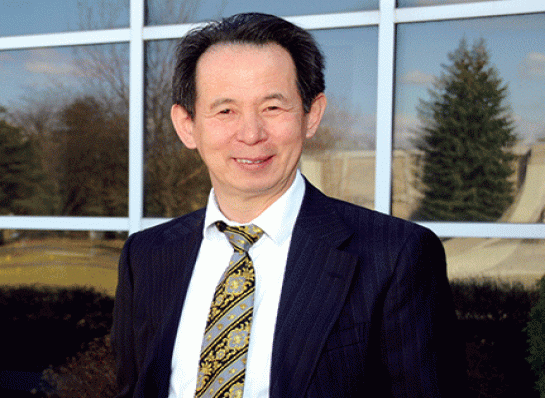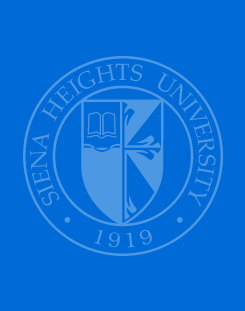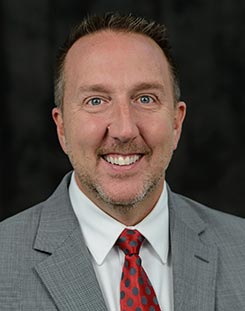120
Total Credits
40
Total Classes
On Ground
Format
Students majoring in Music Education will be able to complete their degree in four years. Very few programs are able to offer that. Here at Siena Heights, we have the small, flexible program that is able to do it.
Text Message Opt-in Policy
“The value system Siena was trying to teach me has benefited me the most.”
Jacob Chi ’85
Principal Guest Conductor at Colorado State University-Pueblo

Learn what the Siena Effect can do for you.
Students majoring in Music Education will be able to complete their degree in four years. Very few programs are able to offer that. Here at Siena Heights, we have the small, flexible program that is able to do it.
With a theme of “Committed to Excellence,” the SHU Music Department wants its students to receive the background and experience to teach in a variety of fields, including instrumental and chorale.
And the Liberal Arts is infused in what we do in Music Education as well. You’ll get to know the faculty personally, and classes will work together to inform each other. In other words, it’s all one, big four-year classroom.
Call it harmonious.
Music Education students at SHU are collegiate members of the National Association for Music Education, Michigan Music Educators Association, and other professional organizations appropriate to their content areas.


All Siena students have the option of participating in the following ensembles:
Siena Heights University conducts Arts Scholarship Days for prospective students.
High school seniors and transfer students who would like to major in music, art or theater or perform in the choir, band, marching band, orchestra or jazz band can schedule an audition or portfolio review and campus visit during Arts Scholarship Days @ Siena. Scholarships will be awarded to qualifying students. In addition to their audition or portfolio review, students may have the opportunity to meet with current scholarship recipients over lunch, have an individual meeting with Admissions Counselor and enjoy a campus tour.
Pre-registration is required.
How Effective is Siena Heights’ Teacher Preparation Program?
Our Candidates know how to teach and know their content.
At Siena Heights University, we believe educator preparation programs should be held to high standards. Our teacher preparation program demonstrates that we prepare teachers who have a positive impact on children’s learning and development. We collect and analyze performance-based data to help us understand the answers to questions such as: What do our candidates know? Do their students learn? Do their employers feel they are well prepared? By analyzing data, we are able to document the effectiveness of our programs and continuously improve the way we prepare teachers to meet the needs of students.
Guiding these high standards for continuous improvement are the following eight (8) annual reporting measures for accreditation by the Council for the Accreditation of Educator Preparation (CAEP).
1. Impact on P-12 Learning and Development
The Michigan Department of Education (MDE)’s surveys of cooperating teachers for all student teachers specifically asks this question: “During the experience, my K-12 school collaborated with the college/university’s preparation program to positively impact the learning and development of K-12 students in my classroom.” Cooperating teachers indicate that indeed Siena Heights’ candidates positively impact the learning and development of their students.
Years | Cooperating Teacher (n) | Score of Strongly Agree |
2016-20 | 31 | 97% |
Completers’ P-12 Student Growth Data
As another measure of how EPP graduates are performing in their teaching assignments during their first three years in public schools, the EPP initiated a pilot study in 2017-18 to look more deeply at a sample of graduates’ actual student achievement data used in their evaluations. The sample included elementary, middle/high school (secondary), and special education teachers. (See also indicators of teaching effectiveness below.)
2016-17 Summary
Teacher, grade level | Student Growth Instrument | Results |
4th grade | DRA (reading running record) Fall to Winter | Fall average = 34.43, N=23 |
NWEA Reading RIT | Fall average = 198.4, N=24, target=198.2 | |
NWEA Math RIT | Fall average = 206.9, N=23, target=201.9 | |
3rd grade | Fountas & Pinnell | At grade level Fall: 12/19 (63%) |
MAP: Reading | Fall mean = 198.1, N=20, Norm grade level | |
2nd grade | Fountas & Pinnell | Students at grade level expectation: 23/24 (95.8%) |
Pearson Realize Diagnostic Test | Fall average = 28.32, N=25 | |
Math | NWEA Math RIT, | Fall average = 215.3, N=83, target=217.6 |
MWEA Math RIT, | Fall average = 221.8, N=42, target=222.6 | |
High school special education | Teacher-created Pre/Post Test | Pre-test average = 30% |
For the pilot study, five teachers who are graduates of Siena Heights University submitted student achievement data from their annual evaluation. Regardless of their grade level (2nd grade, 3rd grade, 4th grade, 6th/7th grade, high school) or content area tested, every teacher recognized improved average scores on every student growth instrument. As indicated in the table above, results generally exceeded the target outcome and/or grade level mean. Despite the small sample size, this growth reflects the teachers’ understanding of content, employment of effective teaching techniques, analysis of formal and informal assessment data, and attention to ongoing reflection and adjustment as practiced during their education preparation program.
Similar data will be collected and analyzed each year to monitor how graduates are impacting P-12 student learning. Within the next two years, participating teachers will be asked to survey their P-12 students to collect additional data on their impact.
Due to COVID-19 and resulting lack of testing, data was not updated for the 2019-2020 year.
2. Indicators of Teaching Effectiveness
Siena Heights’ graduates in their first three years of teaching rate above the state average on teaching effectiveness. In the 2014-15 and 2015-16, 100% of the graduates were rated effective or highly effective. In 2016-17, 97% (34/35) graduates were rated effective or highly effective. (See also the above, case study of completer P-12 student growth data for teaching effectiveness.)
Siena Heights University’s Division of Education was granted national accreditation by the Council for the Accreditation of Educator Preparation (CAEP) for the full seven years, from Spring 2020 to Spring 2027. This accreditation certifies the forenamed professional initial certification programs has provided evidence of meeting all CAEP’s standards.
Costs & Aid
We know that college can be expensive, but we don’t want cost to keep you from attending Siena Heights University! We offer numerous financial aid opportunities. Federal aid is available to students who qualify by completing the FAFSA. Feel free to contact us with questions about financial aid opportunities, or click on one of the links below.
Interested in Siena Heights University?
Visit
Experience Siena Heights by touring the Adrian campus and meeting the people who make up our dynamic community.
Questions? Let’s Talk.
We’d love to get to know you and answer any questions you may have.

